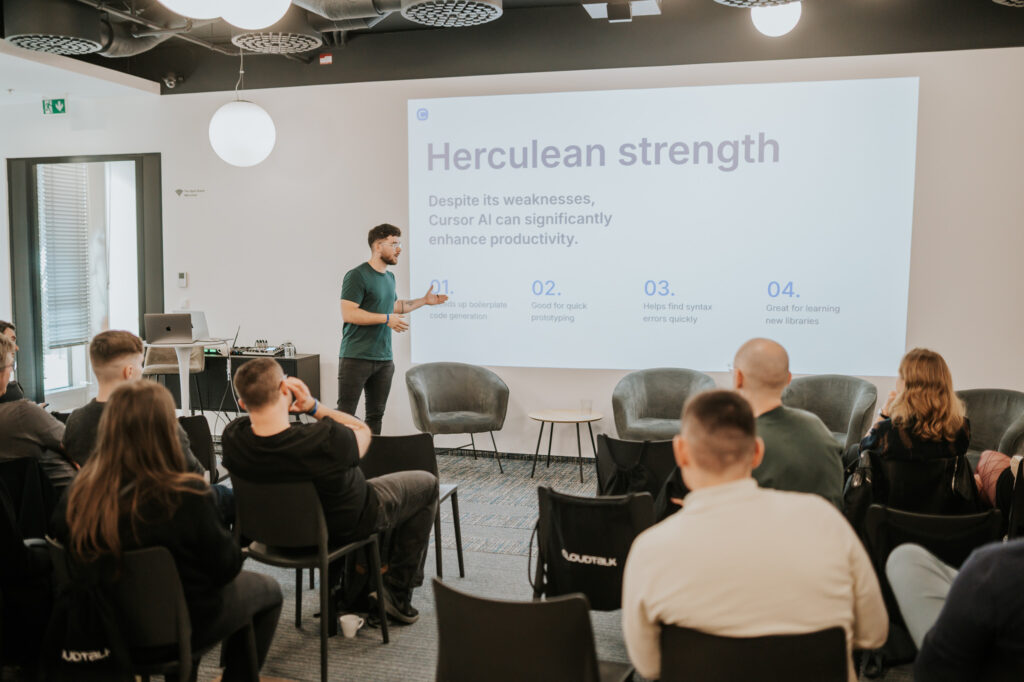
Why AI Should Sit Next to Every Engineer
Engineering productivity isn’t just about typing faster—it’s about making smarter decisions, reducing context-switching, and spending more time solving real problems. That’s why CloudTalk uses Cursor AI—an AI-powered IDE companion that accelerates the way our developers build.
Let’s break down why it’s a game-changer.
What Cursor AI Actually Does
Cursor AI isn’t just a code autocompletion tool. It’s a deeply integrated assistant that helps developers:
- Understand legacy code
- Spot performance issues
- Refactor large codebases
- Write tests automatically
- Prototype faster
- Explore unfamiliar libraries
Key Features We Use
1. .cursorignore and .cursorrules
Helps developers fine-tune what the AI sees and how it acts. Prevents noisy suggestions and keeps the context clean.
2. Claude 3.7 & Mode AGENT
Running the latest LLMs allows for more natural back-and-forth with the assistant, especially when planning large feature updates.
3. Project-Wide Indexing
Cursor indexes the entire repo—meaning it can:
- Track method calls across services
- Understand usage patterns
- Suggest architectural improvements
4. Prompt Templates
We’ve created prompts for:
- Building presentation pages
- Creating landing pages
- Writing feature documentation
- Generating API interfaces
The Benefits We’ve Seen
- 60% reduction in time spent on boilerplate tasks
- Faster onboarding for new engineers
- More consistent code quality across teams
Limitations to Watch For
Cursor isn’t perfect—and that’s okay. It struggles with:
- Deep domain-specific logic
- State-heavy side effects
- Making long-term architectural decisions
That’s why we treat Cursor as a copilot, not a replacement.
How to Get the Most Out of Cursor
- Set clear boundaries in prompts
- Ask for comparisons, not just answers
- Always validate AI-generated code
- Pair AI with peer code review
AI tooling like Cursor gives developers superpowers—but only if you wield it thoughtfully.











